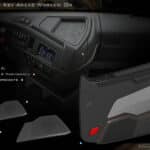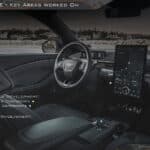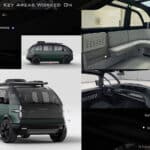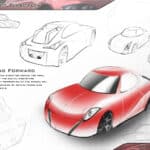In the Driver’s Seat

The future may have seemed like a distant mirage to Sean Coleman in the spring of 2010, but I knew how he’d get there. Whatever path he chose, he’d be at the wheel.
I met the young industrial design graduate student a few days after he took first place in a major automotive design competition, the Shell Eco-Marathon Autodesk Real World Challenge. Winning the contest meant more than just a line on his résumé or a few sketches for his portfolio.
As part of the contest, Shell agreed to build the winning concept car, which would be unveiled at the three-day Eco-Marathon event in Houston in front of thousands of car enthusiasts and members of the media. As the car’s designer, Coleman won an all-expenses-paid trip to the event, and the opportunity to get behind the wheel of his little red eco-sports car.
The project was a labor of love — and of hard work.
“The design went through about 25 ideations,” Coleman told me. “At first it looked like a snake or viper. I liked it but thought it might be a little much for some people, so I modified it.”
After he returned from the whirlwind event, Coleman was all smiles. Not only did he take Houston Mayor Annise Parker for a drive in the concept car; as I wrote in an article describing his adventures, “he palled around with oil company execs, donned a NASCAR racing outfit (borrowed from Daytona 500 winner Kevin Harvick) and took in the Duke-Baylor game in the Elite Eight.”
Today, Coleman can trace his career success in a straight line back to the skills he learned in the NC State College of Design and the connections he made at the Shell Eco-Marathon. Not surprisingly, he’s working as a digital surface modeler for the Ford Motor Company and, before that, was a digital sculptor for Volvo Trucks.
“The Eco-Marathon was definitely an absolute blast,” Coleman says. “Driving the car was a truly surreal experience.”
Another highlight — and one that was to pay dividends in the years ahead — was Coleman’s determination to make full use of the event’s networking opportunities.
“I was talking to the Autodesk representatives, and I said, ‘You guys wouldn’t have any internships by chance, would you?’ And wouldn’t you know it, they said yes,” Coleman recounts.
As a result, he spent the summer at the company’s headquarters in San Francisco, where he lunched with CEO Carl Bass and built connections with seasoned designers, software developers and other creative professionals. His familiarity with the company and its software helped him land various opportunities teaching Autodesk Alias at NC State and in the automotive industry.
Drive for Perfection
Ironically, Coleman says he hadn’t thought much about automotive design before entering the Eco-Marathon contest in 2010.
“I always thought automotive design was interesting, but because NC State didn’t have a major auto design program, I didn’t find myself gravitating to it as much,” he says. “But I still thought it was awesome and still wanted to do some cool car projects.”
What NC State lacked in auto design courses, it made up for in the person of Bong Il Jin, an industrial design professor who spent a decade as an auto designer in South Korea, including four years as chief designer at Daewoo Motor Co.
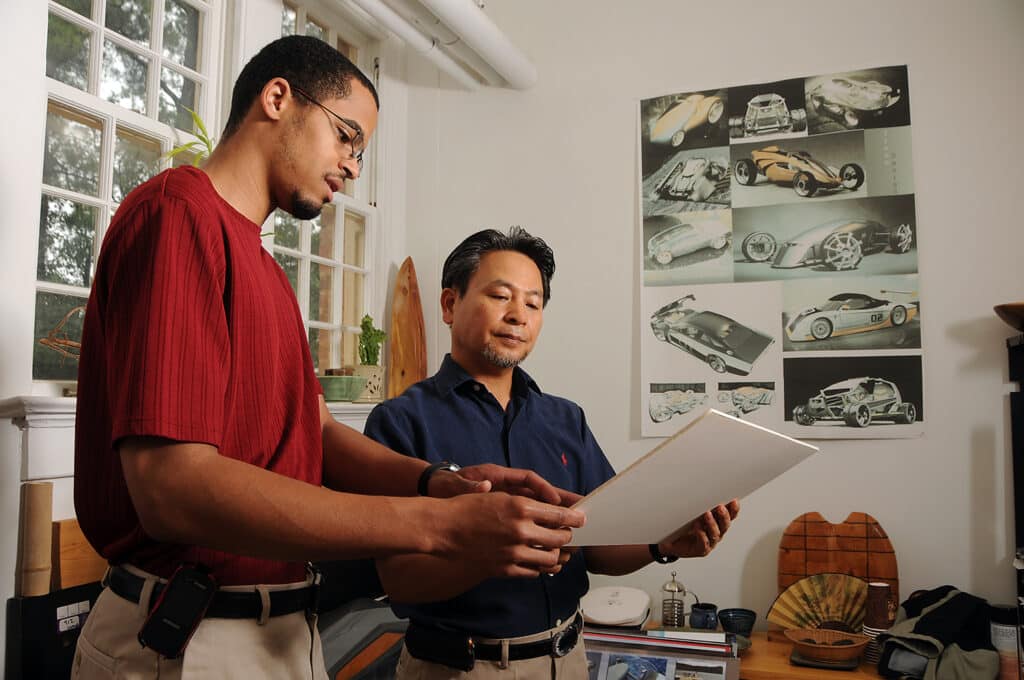
Legendary for his unrelenting drive for perfection, Jin coached Coleman to add stylish, modern design elements to his concept car. Although Jin’s advice added more challenges to the work, Coleman looks back with gratitude for the professor’s guidance.
“You may have loathed some of his methods and you may have been crying at your desk in the design studio and your tears may have been messing up your sketch because you had to do it over and over and over and over,” Coleman says, only half joking. “But then you’re happy because you’re winning contests and getting work and you’re able to come back and share your success. And then he’s happy, too.”
Coleman recalls Jin motivating his students with a simple refrain: “My instruction may be challenging, but all my students get jobs.”
Learning to Learn
Coleman credits all his professors and mentors at NC State for imparting important lessons that have guided his career. Many go well beyond the principles of design.
“They taught me about planning and how important that is in an organization, and also about networking,” he says. “But the biggest lesson was learning how to learn. If you learn how to learn, then you can master anything.”
Where does he see the road leading in the coming years?
“I’m thinking about what I could do as an entrepreneur one day, whether it be my own line of products that I design and sell, or through design consultation,” he says. “I’d like to build wealth, start a family and create opportunities for others — and then venture into philanthropy, either financially or by sharing knowledge.
“I have a few ideas kicking around my head.”
View Examples of Coleman’s Work
This post was originally published in NC State News.

